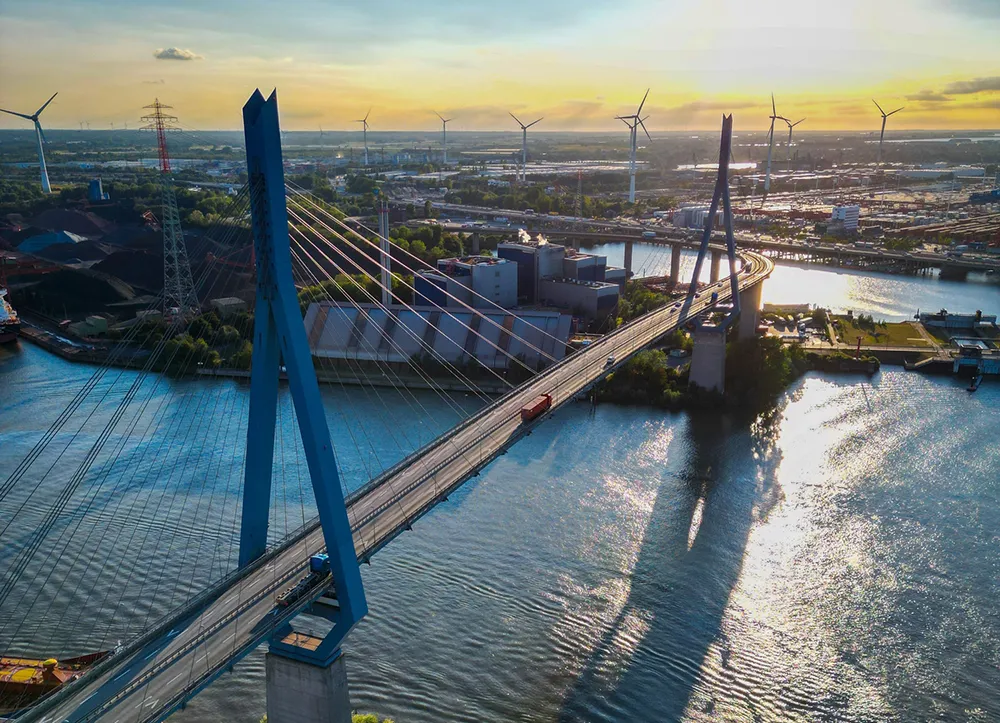
Traffic Data Systems has been awarded a bridge Weigh in Motion contract from the Hamburg Port Authority (HPA) in northern Germany.
The Köhlbrand Bridge across the River Elbe is one of the most important transport links in the port of Hamburg.
"Fifty years of heavy traffic have taken their toll on this bridge," explains Traffic Data Systems founder Florian Weiss.
"Today not only significantly more - but also significantly heavier - vehicles pass the bridge than planned. That's 38,000 vehicles per day, 43% of which are heavy goods vehicles, so extensive renovation work has already been necessary several times."
The HPA put a WiM system out to tender for the first time in 2010; this was supplied by Traffic Data Systems and operated for several years. Just a few weeks after it went into operation, a ban on lorries overtaking was imposed and the maximum permitted speed was reduced from 80 km/h to 60 km/h.
At the end of 2024, the HPA put the renewal of the WiM system out to tender - and this was also won by Traffic Data Systems at the beginning of 2025.
Its WiM technology fulfills the requirements of OIML R134. In addition to overview and ANPR cameras, scanners that graphically display the profile of the vehicles will also be supplied. Construction of the WiM system is planned for summer this year.
The reinforced concrete and prestressed concrete structure/steel cable-stayed bridge was opened in 1974. At 3,618m long, 135m high (clearance height 53m), it is Germany's second-longest bridge.
Köhlbrand Bridge's elegant and unique design has made it an official cultural monument of the city of Hamburg.










